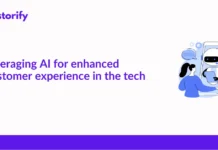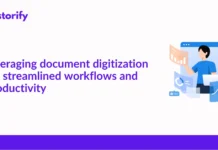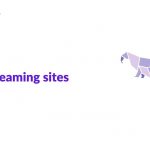From how many points could a burglar potentially break into your home? They could come in through the front door or the windows. If you’ve got a backyard, they could enter from there and, after that, potentially through the rear entrance to your property. Maybe you’ve got a larger home with a side door as well, or an adjoining games room or apartment they could try and enter through.
In the cyber security industry, these possible access points are what is known as an attack surface. It refers to the number of attack vectors or possible points from which a non-authorized user could potentially access a system and maybe extract data.
For organizations wanting to secure their attack surfaces, visibility is everything. Think of it as the equivalent of setting up security cameras for different access points in your home or periodically walking around checking them during the day. Because it’s impossible to secure what you can’t see, it’s essential that everyone better understand their possible attack surface in order to protect them. Doing so is a vital part of app security.
If you rent a house or apartment in the Cincinnati area, chances are you’ve been hit with a substantial rent increase in the past year.
Also check out: apartments for rent in Cincinnati
The overall median rent in the Cincinnati metro area reached $1,682 in August, up about 25.8% from the same month a year ago, according to a report released Wednesday by real estate market tracker, Redfin.
That was the biggest year-over-year surge in rents among the top 50 U.S. metro areas, continuing a long-term trend in which the Cincinnati area has led the nation for the fastest pace of rent hikes in two out of the past three months, the report showed.
The deluge of new vulnerabilities
New vulnerabilities are discovered constantly. These could be anything from broken access control and vulnerable or outdated components to cryptographic failures and security misconfigurations – and everything in between.
Luckily, not every vulnerability is exploitable by attackers, with some sources suggesting that the number that are exploitable in practice is just one out of every hundred vulnerabilities discovered. However, this also comes with a downside. With an enormous pile of vulnerabilities to be aware of and comb through, security teams can have a hard time finding the proverbial smoking gun or the needle in the haystack: the vulnerability that will actually cause damage.
Organizations wanting to protect themselves must, essentially, learn to think like an attacker. That means combing through the large number of vulnerabilities and attempting to exploit them in order to find the weak link that can then be addressed internally. This is a triage process that allows security teams to discover what has to be addressed as a major priority, and what can be put off until a (slightly) later date. Finding ways to do this is the first step in turning security management into a proactive, rather than reactive, part of the workflow.
Finding vulnerabilities that can be exploited not only means looking at what technically can be exploited by attackers (theoretical vulnerabilities), but also the vulnerabilities which can most easily allow attackers to gain access to critical assets – whether that’s exfiltrating data, moving laterally within networks, or whatever else.
Making maps
In order for proper safeguarding against attacks organizations must start by mapping out their infrastructure in terms of systems, channels and routes that are open to possible exploitation. That means being aware of everything from web servers to different software used and mapping out possible attack vectors.
Closing application security gaps isn’t easy to do manually, though. Periodic and manual testing is no longer enough to deal with the dynamic changes in this fast-moving world. Instead, security teams must have access to on-demand visibility when it comes to all their assets and possible exposures – and automated testing is the only way to truly achieve this. With threats like ransomware and a shift to remote work and greater use of the cloud, these measures are more essential than ever. Fortunately, the tools are there to help – not just with automated testing but also with risk prioritization when it comes to the task of effectively mitigating any and all security gaps.
The right tools for the job
In addition, organizations should avail themselves of other tools that can help block attacks. Tools like Web Application Firewalls (WAF) can aid by monitoring and filtering the HTTP web traffic passing between the internet and individual web applications, helping protect against attacks such as cross-site-scripting (XSS), SQL injection, and more.
Meanwhile, Runtime Application Self-Protection (RASP) is able to analyze user behavior along with application traffic at runtime; detecting and blocking cyber threats through offering greater visibility when it comes to application source code, while helping to analyze vulnerabilities and other weaknesses.
These aren’t the only tools available, either. Whether it’s Web Application and API Protection (WAAP), Software Composition Analysis (SCA), Static Application Security Testing (SAST) or Dynamic Application Security Testing (DAST), there is an impressive arsenal of technologies that can help both provide greater levels of visibility into attack surfaces and block threats as they occur.
In doing so, not only will they help everyday users and organizations to map their potential weak spots; they also provide a map on how to eliminate weak spots altogether. In an ever-more digital world, where cyber threats can be ruinous in their effects, it’s one of the smartest investments you can possibly make.













